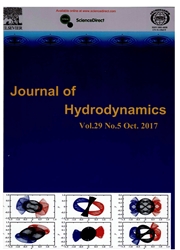

 中文摘要:
中文摘要:
To solve water hammer problems in pipeline systems,many numerical simulation approaches have been developed. This paper improves a flux vector splitting( FVS) scheme whose grid is the same as the fixedgrid MOC scheme. The proposed FVS scheme is used to analyze water hammer problems caused by a pump abrupt shutdown in a pumping system with an air vessel. This paper also proposes a pump-valve-vessel model combining a pump-valve model with an air vessel model. The results show that the data obtained by the FVS scheme are similar to the ones obtained by the fixed-grid method of characteristics( MOC). And the results using the pump-valve-vessel model are almost the same as the ones using both the pump-valve model and the air vessel model. Therefore,it is effective that the proposed FVS scheme is used to solve water hammer problems and the pump-valve-vessel model replaces both the pump-valve model and the air vessel model to simulate water hammer flows in the pumping system with the air vessel.
 英文摘要:
英文摘要:
To solve water hammer problems in pipeline systems, many numerical simulation approaches have been developed. This paper improves a flux vector splitting (FVS) scheme whose grid is the same as the fixed- grid MOC scheme. The proposed FVS scheme is used to analyze water hammer problems caused by a pump abrupt shutdown in a pumping system with an air vessel. This paper also proposes a pmnp-valve-vessel model combining a pump-valve model with an air vessel model. The results show that the data obtained by the FVS scheme are similar to the ones obtained by the fixed-grid method of characteristics (MOC). And the results using the pump-valve-vessel model are almost the same as the ones using both the pump-valve model and the air vessel model. Therefore, it is effective that the proposed FVS scheme is used to solve water hammer problems and the pump-valve-vessel model replaces both the pump-valve model and the air vessel model to simulate water hammer flows in the pumping system with the air vessel.
 同期刊论文项目
同期刊论文项目
 同项目期刊论文
同项目期刊论文
 期刊信息
期刊信息
